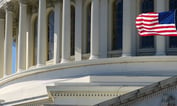Beyond the U.S.-China trade war and government shutdown, there is another risk to the U.S. economy that could undermine growth: excessive and low-quality corporate debt, say former FDIC chair Sheila Bair and Gaurav Vasisht, director of financial regulation at the Volcker Alliance.
In an op-ed published in Friday’s New York Times, they write that “the credit quality of investment-grade bonds has deteriorated” as have underwriting standards on leveraged loans to risky companies while the size of the corporate bond market has swelled to nearly $7 trillion and a record high percentage of GDP. At the same time, junk bond yields until recently were too low to compensate investors for the additional risk they were taking.
“Cracks are already forming,” write Bair and Vasisht. “In December, borrowing in the high-yield bond market came to a standstill,” and deals in the leveraged loan market slowed due to a lack of interest from mutual funds and collateralized loan obligation (CLO) managers, their biggest buyers.
A key question is whether the big banks are strong enough to handle growing instability. Bair and Vasisht contend that despite stress tests and better capitalization they may not be up to the task because of “significant exposure to corporate debt” as underwriters, market makers, investors and lenders in that market and as buyers and sellers in the credit default swap market. “In a crisis, these exposures could serve as a channel for contagion in a highly interconnected financial system.”
Adding to the vulnerability are the regulations themselves. The stress tests understate the effect of financial sector stress on the economy and rely on risk-based capital ratios rather than a cap on the percentage of bank funding from debt, which is a “more credible yardstick,” and current capital surcharges levied on the eight biggest banks may be too small, according to Bair and Vasisht.
In addition, the regulators themselves are considering watering down current regulations that were enacted after the 2008 financial crisis in order to prevent another one. These include weakening the liquidity buffers of banks, leverage capital requirements for exposure to corporate derivatives and Volcker Rule prohibitions on risky trading.
“To prevent a repeat of 2008, regulators must look beyond the concerns of bank lobbyists and address threats to the economy,” write Bair and Vasisht. They suggest “thicker capital cushions” for the big banks and “tighter leveraged loan underwriting standards.”’









 January 11, 2019 at 05:02 PM
January 11, 2019 at 05:02 PM











